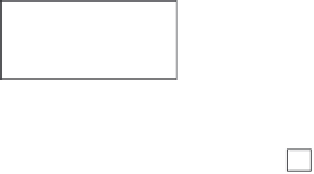Environmental Engineering Reference
In-Depth Information
specified under
CC
.5.4. There are three control modes required to
control
Reactive Power
generation of the
WFPS
:
(i)
Voltage Control
mode
(ii)
Power Factor
control mode
(iii)
Reactive Power Dispatch
The technical requirements to control voltage differ between
WFPSs Connected
to the 132 kV and higher voltage
Systems
and
WFPSs Connected
to the 33 kV System.
(a)
For
WFPSs Connected
to the 132 kV and higher voltage
Systems:
(i)
Whilst the
WFPS
is operating in
Voltage Control
mode the minimum reactive capability is defined by
the envelope ABCD in the
Voltage Control
char-
acteristic shown in CC.S2.3.2 Figure 1.
(ii)
Whilst the
WFPS
is operating in control mode the
reactive capability is defined by the envelope AEB in
the
Power Factor
control mode characteristic shown
below.
(iii)
Whilst the
WFPS
is operating in
Reactive Power
Dispatch
control mode, the
WFPS
, as a minimum,
must be capable of exporting or importing
MVAr
within the envelope ABCD.
Minimum Reactive Capability Characteristic of WFPS at the Connection Point
1.1
A
B
1
Connected at
132 kV and above
0.9
0.8
0.7
0.6
0.5
Voltage Control Mode/
Reactive Power Dispatch
Mode
Power Factor Control
Mode
0.4
0.3
0.2
0.1
C
-0.33
Consumption (lead) Mvar Capability
of the WFPS at the Connection Point
D
0
0.33
Production (lag) Mvar Capability of
the WFPS at the Connection Point
E
Q/P
max
CC.S2.3.2 Figure 1
Minimum reactive Capability of
Wind Farm Power Stations
Connected
to the
Transmission System
at 132 kV and above
when operating in various modes






































































Search WWH ::

Custom Search